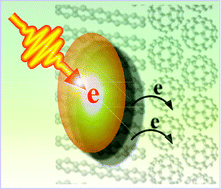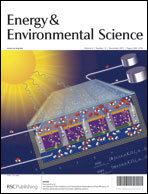Exceeding the Shockley–Queisser limit in solar energy conversion
Abstract
We summarize our recent explorations of photophysical mechanisms that may be utilized in solar cells with power conversion efficiency theoretically exceeding the Shockley–Queisser limit. The dominant losses responsible for the Shockley–Queisser limit are below band-gap and thermalization (hot carrier) losses; together, they account for >55% of the total absorbed solar energy. This perspective focuses on two photophysical mechanisms, hot carrier equilibration and carrier multiplication, which may be used to reduce these losses through their utilization in novel solar cell designs. For the implementation of a hot carrier solar cell, we discuss the necessity of hot carrier scattering as well as the photon flux challenge. Although recent experiments have demonstrated the feasibility of hot-electron extraction from photo-excited semiconductor nano-crystals, the photon flux challenge cannot be met in these materials. We propose graphene and related materials as potentially ideal chromophores for hot carrier solar cells. For the multi-exciton solar cell, we focus on the molecular analog called singlet fission. Recent experiments in our lab revealed a quantum coherent mechanism in which photo-excitation of the organic semiconductor pentacene or tetracene creates a quantum superposition of singlet exciton and multi-exciton states. This quantum superposition and the corresponding decoherence time (i.e., singlet fission time) are critical to the competing dynamics of charge or energy harvesting. We discuss design principles for solar cells based on singlet fission materials.


 Please wait while we load your content...
Please wait while we load your content...